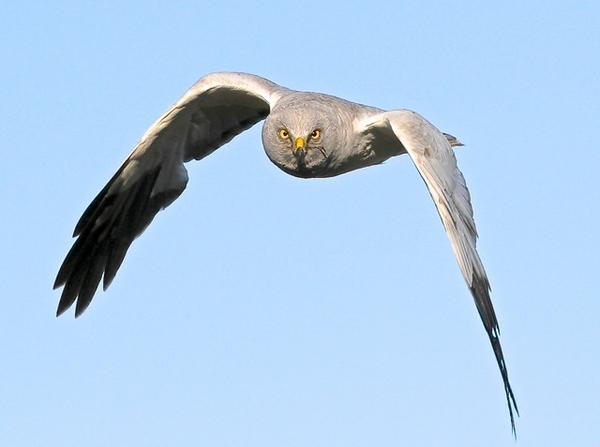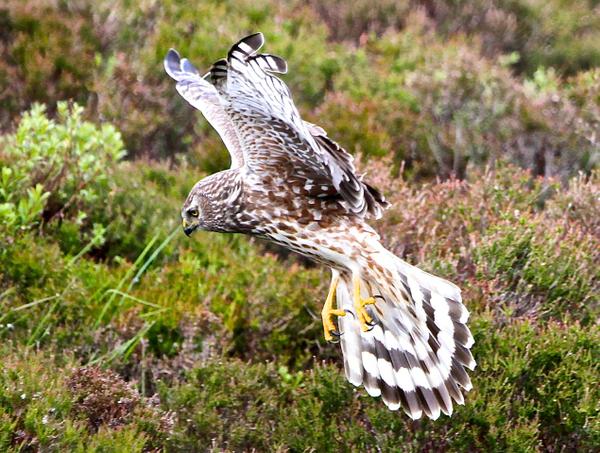Supplementary written evidence from Dr Mark Avery (GRO0530)
Summary:
- The situation in Wales does not support the contention that management for grouse shooting in Wales would be of great conservation value. The study cited is weak and has few data on species other than Red Grouse. Its findings with respect to Hen Harriers conflict with much better and more comprehensive data.
- The ecology of the uplands would be much improved by the banning of driven grouse shooting and the National Trust is moving strongly in that direction with its High Peak vision.
- Whatever might be the claimed economic benefits of driven grouse shooting since they depend on wildlife crime of an ongoing and immense scale they do not provide a legitimate argument for the continuation of driven grouse shooting.
Clarification and expansion of oral evidence
- I am grateful to the Petitions Committee for holding this inquiry and for inviting me to give oral evidence for a ban on driven grouse shooting alongside three witnesses who oppose that ban.
- I am also grateful for this opportunity to expand on and clarify my evidence.
- I was asked about the situation in Wales (Q27) and a study of this was mentioned. The study referred to was ‘Changes in the abundance and distribution of breeding birds in the Berwyn Special Protection Area, North Wales 1983-2002’ by staff of the Game and Wildlife Conservation Trust which was published in Birds in Wales1. These data are interesting but not at all convincing to the proposition that grouse moor management benefits the conservation of birds (and includes no data on other wildlife). I was right to describe it as anecdotal in my oral evidence.
- The study includes detailed long-term data on the numbers of Red Grouse shot but very little data on other species. It does not cover all of the Berwyn SPA, only selected parts of it. It does not provide data throughout the period 1983-2002 (except for Red Grouse), merely data from 1983-5 and 2002. Grouse management ceased in ‘the late 1990s’ and no data are given for bird numbers (except Red Grouse) in the period between 1983 and the cessation of grouse shooting, nor between the cessation of grouse shooting and 2002. In other words, we are asked by the Moorland Association to ascribe all the changes in bird numbers over almost 20 years to one event which happened in the middle of that period and to ignore all the other changes in Wales during that time, and their conclusions are only based on four years data, just one of which was after grouse shooting ceased. This is a very weak ‘post hoc, ergo propter hoc’ argument.
- An indication that at least some of the conclusions of this article are wrong is provided by its findings on Hen Harrier (as flagged in my oral evidence). The paper states ‘Numbers of Hen Harriers declined by 49%’. I see from the written evidence2 that some supporters of driven grouse shooting claim that Hen Harriers are absent from Wales and that they would not be if grouse shooting were maintained at high levels in Wales. We know from carefully conducted national surveys of Hen Harriers that the Welsh population of Hen Harriers has increased in numbers from 28 pairs in 19983, to 43 pairs in 20044 to 57 pairs in 20105 (and we await the results of the 2016 survey which will bring these figures up to date.
- Table 5 of the Game Conservancy article demonstrates that the limited bird counts in this study from the Berwyn SPA were in line with general trends in Wales as a whole.
- I was also asked (Q28) about the situation on one particular unnamed moor in Wales, where grouse shooting ceased. I am informed that Chris Davies MP, who asked the question, was a member of the Brecon Beacons National Park Authority when that decision was taken. If this is correct, then I am surprised that he did not mention it. I see from the initial written evidence submitted6 that informed local views are not so complimentary about the situation and support a ban on driven grouse shooting.
- I was asked (Q33) about a risk assessment of banning driven grouse shooting and Mr Hart and I got rather bogged down in the economics and I neglected to say much about a vision for the uplands after grouse shooting is banned. I’m grateful for this opportunity to make my views clearer now on both the ecological and economic aspects.
- First the ecology. We can move from a intensively-managed ugly landscape of burned patches to one which is much more natural and beautiful in aspect. A more natural, less intensively managed upland landscape more akin to Scandinavia (where they do not feel the need to torch their hills as we do) and in many parts of the UK such as north and west Scotland and on National Nature Reserves and other nature reserves in the north of England. Such a landscape would be better at storing carbon, better at reducing flood risk and better at providing clean drinking water and would provide more benefits to society as a whole. It would have a more varied wildlife, maintaining all the species that are found on driven grouse moors – some at densities higher than now and some at lower densities. There would be more trees and less heather, but heather cover would still be an important part of the upland scene. People would be more welcome and would spend more time visiting this more varied landscape and that would open up opportunities for more local, and truly local, businesses to flourish. There would still be opportunities for walked up grouse shooting, limited heather burning and legal predator control. This view is very similar to that of the National Trust in its High Peak vision7 for its land in the Peak District National Park. Our National Parks in particular should be places where nature thrives rather than where it is subjugated in the interests of shooting wildlife for fun.
- The alternative to driven grouse shooting painted by the Chair of the Countryside Alliance and witnesses from the Moorland Association and Countryside Alliance (Qs 63 and 64) is not credible. They seek to scare us with the prospect of windfarms, forestry plantations and overgrazing in place of driven grouse shooting. Given that much driven grouse shooting occurs in National Parks, Areas of Outstanding Natural Beauty, Sites of Special Scientific Interest, Special Protection Areas for Birds and Special Areas for Conservations the land use shift that was envisaged cannot occur. All of the imagined scenarios are against current government policy and they are not occurring on land with similar designations that is not managed for grouse shooting.
- I would like to turn back to the economics briefly. Mr Hart seemed to want a fully costed economic analysis of grouse shooting and that is an area where he and I agree. It is something that government should do in order to test the claims of the grouse shooting industry (which has no such analysis in its support).
- The industry’s claims of economic benefit from grouse shooting are small, in the order of tens of millions of pounds (see Q56 and the Moorland Association written evidence8) and have been shown to be overestimates based on flawed methods9. They do not take into account increased flood risk, water treatment costs, greenhouse gas emissions or lost revenue from alternative activities such as eco-tourism. But let us imagine, difficult though it is, that they are true. These economic claims depend on wildlife crime (see my written evidence10). Given that any economic benefits of driven grouse shooting depend for their existence on widespread crime they should be ignored. Whatever the case for driven grouse shooting is, it is not an economic case.
- I have asked the Moorland Association for the source of their estimate of a million pounds a week spent on grouse moor management as the source of this figure is unclear from their written evidence. They have not provided me with that source but if it is the PACEC reports then we know those to be flawed.
References:
- Warren, p. and Baines, D. 2014. Changes in the abundance and distribution of breeding birds in the Berwyn Special Protection Area, North Wales 1983-2002. Birds in Wales 11.
- Written evidence to this inquiry GRO0060.
- I.M.W. Sim, D.W. Gibbons, I.P. Bainbridge, and W.A. Mattingley. 2001. Status of the Hen Harrier Circus cyaneus in the UK and the Isle of Man in 1998. Bird Study 48.
- Innes M.W. Sim, Ian A. Dillon, Mark A. Eaton, Brian Etheridge, Patrick Lindley, Helen Riley, Richard Saunders, Chris Sharpe, and Matthew Tickner. 2007. Status of the Hen Harrier Circus cyaneus in the UK and Isle of Man in 2004, and a comparison with the 1988/89 and 1998 surveys. Bird Study 54.
- The status of the Hen Harrier, Circus cyaneus, in the UK and Isle of Man in 2010. 2013. Daniel B. Hayhow, Mark A. Eaton, Stephen Bladwell, Brian Etheridge, Steven R. Ewing, Marc Ruddock, Richard Saunders, Chris Sharpe, Innes M.W. Sim, and Andrew Stevenson. Bird Study 60.
- Written evidence to this inquiry GRO0063.
- National Trust. High Peak Moors and Vision in the Dark Peak. https://www.nationaltrust.org.uk/kinder-edale-and-the-dark-peak/features/high-peak-moors-vision-and-plan-in-the-dark-peak
- Written evidence to this inquiry GRO0308 para 20.
- Cormack, P. & Rotherham, I.D. 2014. A review of the PACEC reports (2006 & 2014) estimating net economic benefits from shooting sports in the UK. http://www.league.org.uk/~/media/Files/LACS/Publications/Cormack--Rotherham-2014--A-review-of-the-PACEC-reports-2006--2014-EXECUTIVE-SUMMARY.pdf
- Written evidence by Dr M.I. Avery GRO0248 paras 24-30.




















